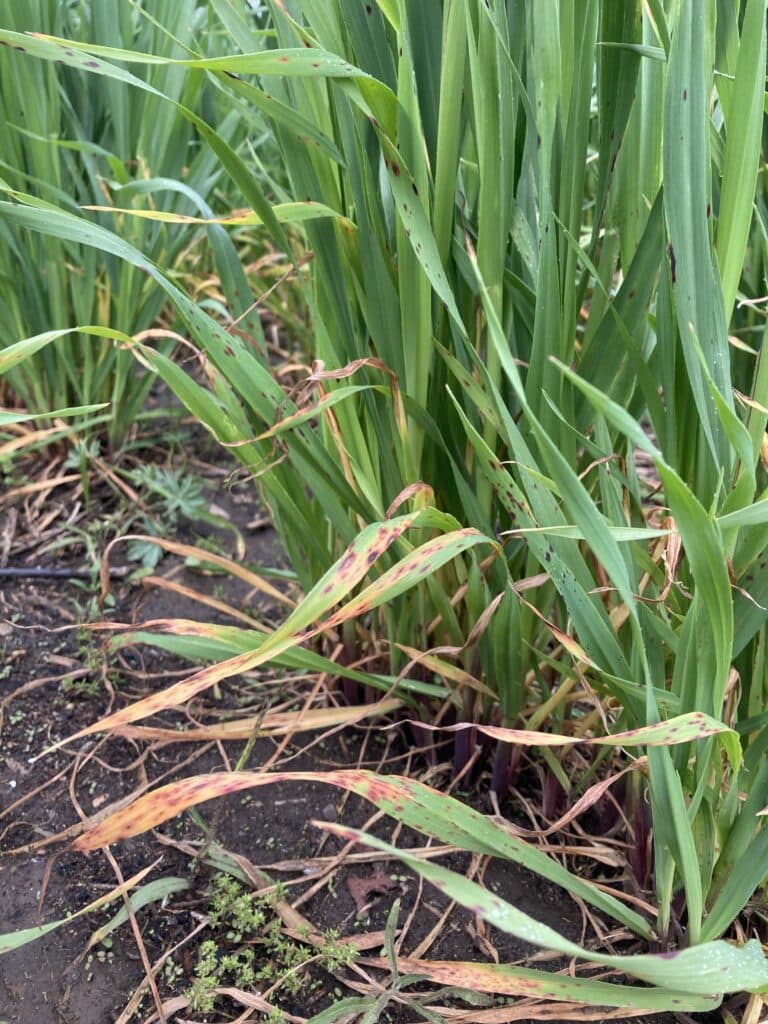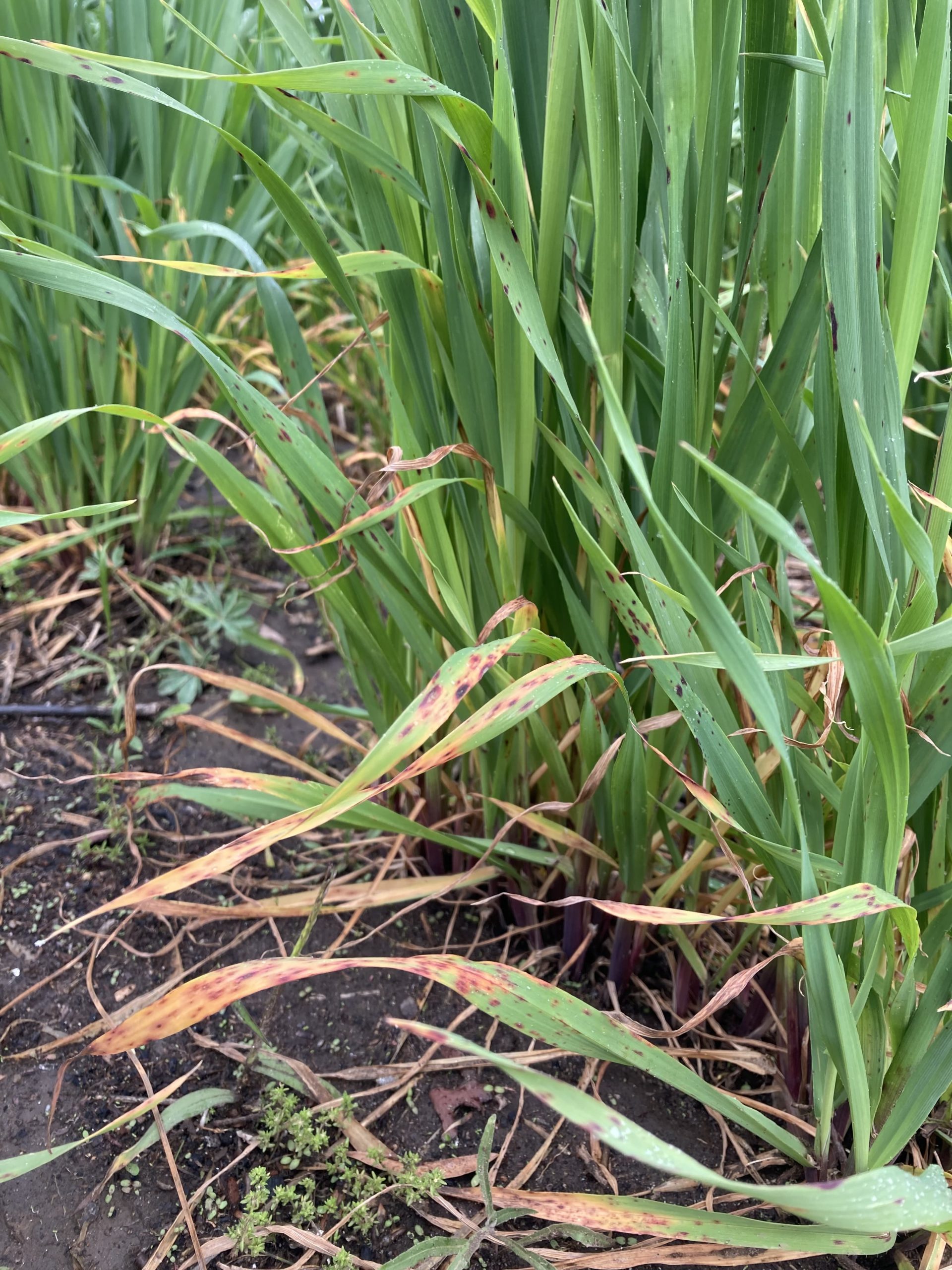Septoria avenae blotch is the most prevalent oaten hay disease in WA and due to the increased rainfall this season, crops, particularly in lower rainfall regions, could be under greater disease pressure than previous years.
DPIRD plant pathologist Geoff Thomas said hay growers had already reported Septoria avenae this season, which wasn’t uncommon, but the wet weather could pose an increased disease load.
“With all this rain, and if it continues, it’s likely the disease pressure on crops could be higher than it has been for a couple of years,” he said.
“Growers in low rainfall areas that don’t normally use a fungicide may need to consider applying one, and those in the higher rainfall areas, could be using more than they had expected.”
Research from the National Hay Agronomy (NHA) project funded by DPIRD and AgriFutures Export Fodder Program and carried out by DPIRD plant pathologist Kylie Chambers found Septoria avenae blotch was the primary disease detected in WA oat crops for the past three years.
Septoria avenae blotch is a foliar fungal disease that can cause significant damage and affect the yield and quality of oaten hay.
Dr Chambers said most paddocks would have some level of Septoria avenae blotch this year.
“The fungus kills the green leaf and that affects how the plant is going to photosynthesize,” she said.
“There’s also discoloured or dead leaf material visible as part of the canopy and that will impact on quality.
“Growers should keep an eye out for oval or elliptical-shaped, dark-coloured lesions on the lower canopy of the crop, which can then develop through the canopy.
“Fungicides applied according to the label recommendations and before the disease has already done the damage, should be effective at managing the disease and also safe in terms of hay quality and residues.”











